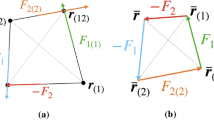Abstract
This paper presents dynamic programming algorithms for generating optimal strip layouts of equal blanks processed by shearing and punching. The shearing and punching process includes two stages. The sheet is cut into strips using orthogonal guillotine cuts at the first stage. The blanks are punched from the strips at the second stage. The algorithms are applicable in solving the unconstrained problem where the blank demand is unconstrained, the constrained problem where the demand is exact, the unconstrained problem with blade length constraint, and the constrained problem with blade length constraint. When the sheet length is longer than the blade length of the guillotine shear used, the dynamic programming algorithm is applied to generate optimal layouts on segments of lengths not longer than the blade length, and the knapsack algorithm is employed to find the optimal layout of the segments on the sheet. Experimental computations show that the algorithms are efficient.
Similar content being viewed by others
References
P.K. Agrawal, “Minimizing trim loss in cutting rectangular blanks of a single size form a rectangular sheet using orthogonal guillotine cuts,” European Journal of Operational Research, vol. 64, no. 3, pp. 410–422, 1993.
S. Anand, C. Mccord, and R. Sharma et al., “An integrated machine vision based system for solving the nonconvex cutting stock problem using genetic algorithms,” Journal of Manufacturing Systems, vol. 18, no. 6, pp. 396–415, 1999.
R. Andonov, V. Poirrez, and S. Rajopadhye, “Unbounded knapsack problem: Dynamic programming revisited,” European Journal of Operational Research, vol. 123, pp. 394–407, 2000.
M.Z. Arslanov, “Continued fractions in optimal cutting of a rectangular sheet into equal small rectangles,” European Journal of Operational Research, vol. 125, pp. 239–248, 2000.
C.H. Cheng, B.R. Feiring, and T.C.E. Cheng, “Cutting stock problem—a survey,” International Journal of Production Economics, vol. 36, no. 3, pp. 291–305, 1994.
S.K. Cheng and K.P. Rao, “Large-scale nesting of irregular patterns using compact neighborhood algorithm,” Journal of Materials Processing Technology, vol. 103, pp. 135–140, 2000.
Y. Cui, “A cutting stock problem and its solution in the manufacturing industry of large electric generators,” Computers & Operations Research, vol. 32, no. 7, pp. 1709–1721, 2005.
Y. Cui and R. Zhou, “Generating optimal cutting patterns for rectangular blanks of a single size,” Journal of the Operational Research Society, vol. 53, pp. 1338–1346, 2002.
A.M. Gomes and J.F. Oliveira, “A 2-exchange heuristic for nesting problems,” European Journal of Operational Research, vol. 141, pp. 359–370, 2002.
N. Lindecrantz, “Method for optimum cutting of rectangular sheets,” Nordisk Tidskr. Informationsbehandling vol. I, pp. 30–35, 1964.
S. Martello and P. Toth, Knapsack problems: Algorithms and Computer Implementations. Wiley: New York, 1990.
T.J. Nye, “Optimal nesting of irregular convex blanks in strips via an exact algorithm,” International Journal of Machine Tools & Manufacture, vol. 41, pp. 991–1002, 2001.
A. Ramesh and N. Ramesh, “A generic approach for nesting of 2-D parts in 2-D sheets using genetic and heuristic,” Computer-Aided Design, vol. 33, pp. 879–891, 2001.
A.G. Tarnowski, J. Terno, and G. Scheithauer, “A polynomial time algorithm for the guillotine pallet-loading problem,” INFOR, vol. 32, pp. 275–287, 1994.
Y. Cui, “Generating optimal T-shape cutting patterns for circular blanks,” Computers & Operations Research, vol. 32, no. 1, pp. 143–152, 2005.
Author information
Authors and Affiliations
Corresponding author
Rights and permissions
About this article
Cite this article
Cui, Y., Huang, L. Dynamic Programming Algorithms for Generating Optimal Strip Layouts. Comput Optim Applic 33, 287–301 (2006). https://doi.org/10.1007/s10589-005-3067-y
Received:
Revised:
Accepted:
Published:
Issue Date:
DOI: https://doi.org/10.1007/s10589-005-3067-y




